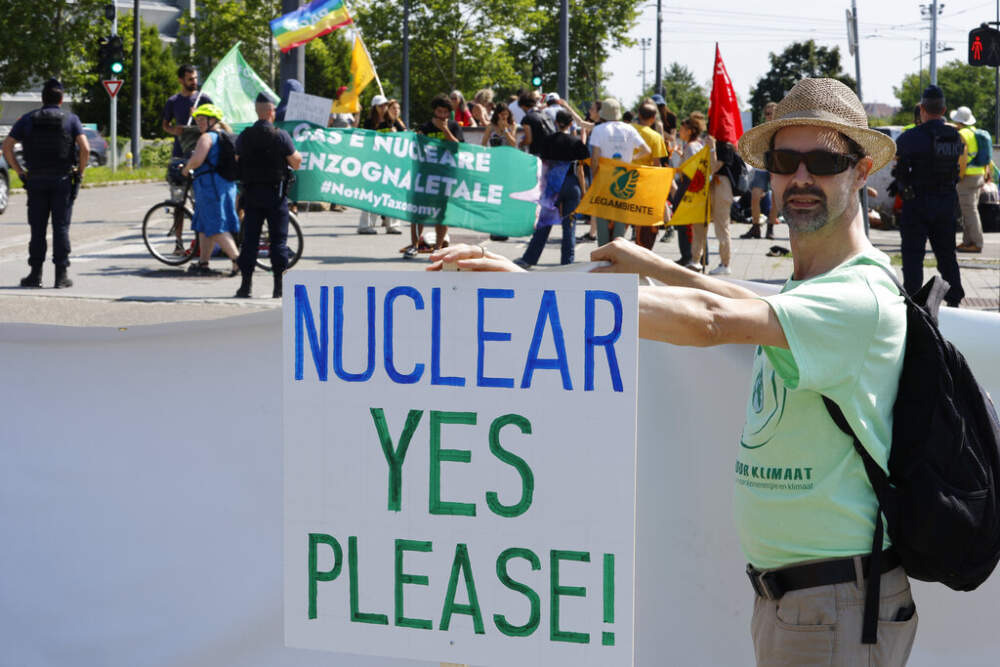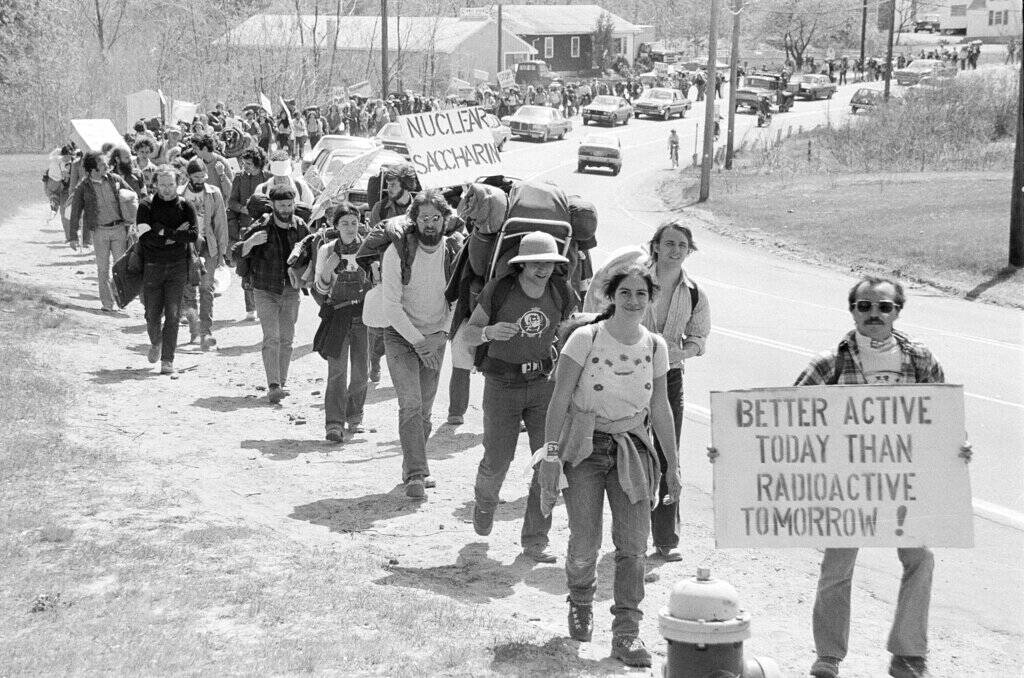Advertisement
Commentary
I've been against nuclear power for decades. Until now

I remember distinctly the protests during the construction of the Seabrook Station Nuclear Power Plant in 1977. More than 2,000 demonstrators peacefully occupied the New Hampshire building site in May of that year, resulting in one of the largest mass arrests in the nation's history.
Many New Englanders of a certain age will recall their slogans: "Go Fishing, Not Fission" and "Better active today than radioactive tomorrow.”
As a wide-eyed college sophomore, I admired the protesters' resolve and their righteous stance against nuclear power. I shared their belief that the Seabrook plant was unsafe, unnecessary and unwelcome. A nebulous association between nuclear weapons and nuclear plants only added to my indignation.
When a reactor at Three Mile Island in Pennsylvania partially melted down two years later, opposition to nuclear power became a reflex. Left-leaning young people like myself embraced a post-Vietnam political orthodoxy that included feminism, environmentalism and resistance to apartheid. Being against splitting atoms slotted into the same ideological bundle.
Years passed. The words "No Evacuation Possible" in foot-high red lettering across a dilapidated barn on a well-traveled road in Newburyport regularly reminded me of the Seabrook controversy and reaffirmed my animus against nuclear energy.

By the mid-1980s, the U.S. had lost its appetite for building nuclear power plants, and Three Mile Island was not the sole reason. The Chernobyl disaster occurred in April 1986. Moreover, the nuclear industry had been plagued by delays and cost overruns. The Seabrook plant exemplified both, with its completion arriving a decade later than projected and its final cost running roughly seven times the original estimate.
The growth of natural gas production was another cause of nuclear power's decline. Fracking took off in the 1990s, making gas cheap and abundant. And the regulatory obstacles for gas-fired plants were far less onerous than for a nuclear plant. Gas, rather than nuclear, replaced New England's retired nuclear plants and aging coal-fired plants, which accounts for the region's overdependence on gas today. One of the reasons Pilgrim Nuclear Power Station in Plymouth permanently shut down in 2019 was its inability to compete with low gas prices.
But the emergence of the climate crisis changed the equation.
The lifecycle carbon emissions of nuclear energy, including the mining and processing of uranium, are far less than those of fossil fuels, which release greenhouse gases when burned. If the goal was to cut carbon, the nuclear option had to be on the table.
Renewable energy advocates viewed nuclear power as a competitor, and they marshaled some compelling arguments against it. Spent nuclear fuel remains toxic for millennia, the power plants are targets for terrorists, the capital costs make it uneconomic, and it can take 20 years to design, permit and build a power station.
Renewables, especially wind and solar, have obvious advantages. There is no fuel cost and no toxic waste. The technologies have improved at a dazzling rate, driving down the bottom-line cost of electricity to less than that of fossil fuels in many cases.
As I was drawn into climate activism 10 years ago, I wavered on the nuclear question. I eventually realized the weight of opinion from writers and leaders I respected was falling decisively on the side of "no nukes." Until it was proven otherwise, renewables were the answer.
Wind and solar were Red Sox. Nuclear was Yankees.
John Maynard Keynes famously said, "When the facts change, I change my mind — what do you do, sir?" And indeed, the facts about nuclear power have changed considerably. A recent article by Jonathan Rauch in The Atlantic details the work of several well-funded start-ups developing the next generation of nuclear reactors.
The emerging technology — some of which could be on the grid in this decade — addresses many of the significant shortcomings that plagued conventional reactors over the past 50 years. New reactors are smaller and modular, allowing standardized units to be manufactured off-site at a lower cost. Most of these new reactor designs use molten salts for cooling rather than water, which is more heat efficient and removes the need for expensive and potentially dangerous high-pressure lines. While fuel waste remains a challenge, it is not an insurmountable one.
Wind and solar were Red Sox. Nuclear was Yankees.
Despite these advances, prominent critics of nuclear energy, notably Marc Z. Jacobsen at Stanford University, argue that the industry cannot produce safe and cost-effective electricity in time to have a meaningful impact on the climate crisis.
But lately, I’m hearing a growing chorus of voices supporting a nuclear renaissance. James Hansen, the godfather of climate change advocacy, has long supported making nuclear power a weapon against global warming, as has former U.S. Energy Secretary Ernest Moniz. And Bill Gates is just one of several deep-pocketed funders betting billions on the success of next-generation nuclear technology.
The momentum behind the nascent nuclear comeback is widespread. At least 10 states have passed or are debating bills calling for the study of advanced reactors. A recent Gallup poll showed a solid majority of Americans support using nuclear power to generate electricity, the highest fraction since 2012. Even Bill McKibben, arguably the most respected voice in climate advocacy, envisions nuclear energy playing a role in fighting climate change.
Given the gravity of the climate crisis, it makes sense to diversify the energy portfolio with multiple low-carbon sources that complement each other. If the nuclear industry can deliver advanced reactors that are reliable, affordable and secure, then it deserves government incentives and production tax credits, such as those it received in the Inflation Reduction Act.
A doctrinaire ideology does not equip us to confront the epic task of decarbonizing our economy. And so, more than 46 years after the protesters occupying Seabrook set me on the anti-nuclear path, I'm ready to be a nuclear advocate.
I won't be sporting a "My Mission is Fission" t-shirt, but I believe it's time to take another look at nuclear energy.
